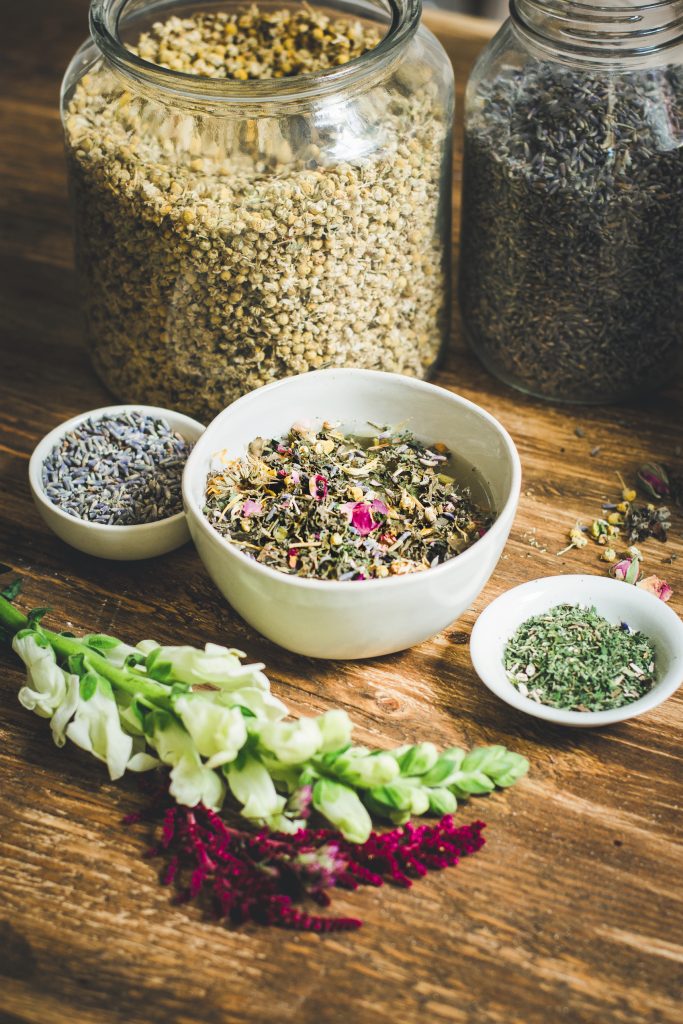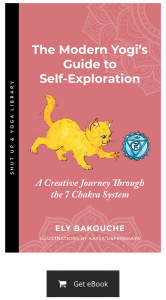Healing the Earth and Connecting to the Divine Feminine

The benefits of food extend far beyond what it does for us nutritionally. It is a catalyst for connection, tradition, and the many beautiful parts of life that we hold in highest value—which for us humans includes the planet we live on. Numerous scientific studies show our need for connection to the natural world in order to maintain an optimal state of well-being, but this knowledge has been part of indigenous traditions for centuries. Today, our coexistence with nature has decreased, and in many ways, we have lost touch with how to be a part of the natural world—how to be fully present in our bodies and senses and embrace the cycles of the seasons.
Herbalism is intrinsically in tune with nature. Because it operates within the context of our collective ecological and evolutionary legacy with the plant queendom, it has been described as “ecological healing.” Its practices offer particular and essential expressions of cooperating with nature and can help us remember our intuitive connection to plants. The more we know about the plants we live among, the more we will be inclined to respect them with all of our daily routines—how and what we eat in terms of foods; our consumption of plastics and other packaging; our food and other waste; chemical additives in our clothing, beauty, hygiene, and cleaning products; our transportation, and more. You wouldn’t serve your mother a big mug of gasoline, so why would you do the same to your mother the Earth, who takes care of all living beings equally and completely and asks for nothing in return?
Respecting the Earth also requires moderation, something that our society doesn’t value. We see ads for herbal products (any product, really), and think more of it must be better. The truth is, enough is the best amount of any medicine, plant or otherwise, and when we’re in sync with our bodies’ messages we will know when we’ve had enough and stop there. Consider this as you are cooking with herbs. Notice that the quantities in the recipes tend to be small—fractions of teaspoons for an entire dish. You can always add more if needed, but it’s a lot harder to take out ingredients! By only taking what we need, no more and no less, we’re ensuring there is enough medicine on the planet for everyone who needs it, today and in the future. To that end, we have purposefully selected ingredients that are not on the at-risk list of herbs curated by United Plant Savers, so that herbalism does not become an additional strain on our natural resources. You can find out more about sustainable herbalism in our Further Study section on page 223.
Getting in tune with nature might sound a bit antiquated to you—and it is. Part of the process of reconnecting to ourselves involves stripping away the veils of convenience, speed, and instant gratification that define our culture. It is the way of ancient and living indigenous cultures, who thrived for centuries without energy drinks or iPhones. These are the cultures whose innate connections to the earth are at the root of modern herbal practices, which we are honored to share with you in these pages to the best of our ability. We hope to continue the line of wise women who have served as ambassadors of nature and thank you for taking on the responsibility of joining these traditions with intentionality and enthusiasm as well.

As women, we also have a special role to play in our individual and collective realignment with nature. Getting closer to the earth as a means of rejuvenating health helped us personally discover a deeper connection to Mother Earth and our own unique experience of our female bodies, in states of disease and wellness alike. It’s alarming to consider that the prevalence of digestive, mental, and hormonal health concerns we discuss in this book is much greater in women than men. At the same time, the Earth is also hurting, ravaged by the effects of climate change, pollution, and industrial agriculture practices that feed our Mother with the wrong kind of nutrition. Thus, in choosing what and how we eat with greater intention and clarity, we are able to nurture our female selves as much as the Earth’s, our ultimate source of health. As Sharon Blackie writes in If Women Rose Rooted:
“If women remember that once upon a time we sang with the seals and flew with the wings of swans, that we forged our own paths through the dark forest while creating a community of its many inhabitants, then we will rise up rooted, like trees. And if we rise up rooted, like trees . . . well then, women might indeed save not only ourselves but the world.”
This healing power applies regardless of our gender identity; all people possess both feminine and masculine energy (what the Chinese Medicine system calls yin and yang), and harnessing more of the feminine energy—with its grounding, nurturing, compassionate, and slow qualities—would help us all resist the larger social ills of greed, burnout, and judgment that are at the root of so much disease. If we want to help our bodies’ creative capacities function optimally—through reproduction as well as professional and creative “offspring”—we cannot block the creative capacity of the Earth; we must treat its resources as we do our own, with respect and generosity.
While our own experiences and expertise are behind the combination of Western herbalism and Ayurveda in this book, the two systems stem from the same roots of indigenous practices not necessarily our own. Our intention is to offer you the most relevant teachings from Western and Eastern traditions. They may use different languages (literal and figurative) to describe the properties of plants, or even rely on different plants themselves based on where they’re grown natively, but the space where they overlap in the Venn diagram of herbalism is larger than where they are separate. This symbiosis of two types of herbalism is a kind of holistic practice in and of itself, and we acknowledge that it will not allow for a complete understanding of either system. We hope to offer a fair and accurate representation of certain concepts and tools from these systems to the best of our knowledge. And we encourage you to join us on a path of study that will likely continue beyond this lifetime.


